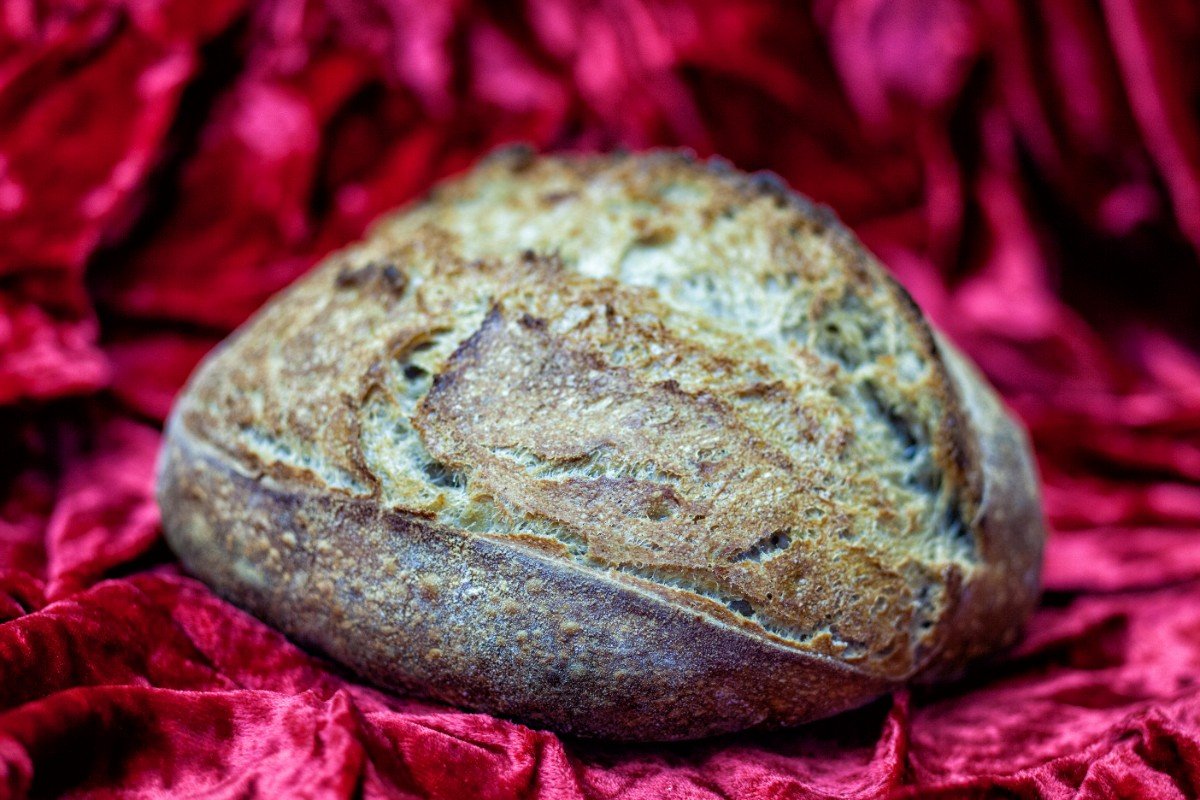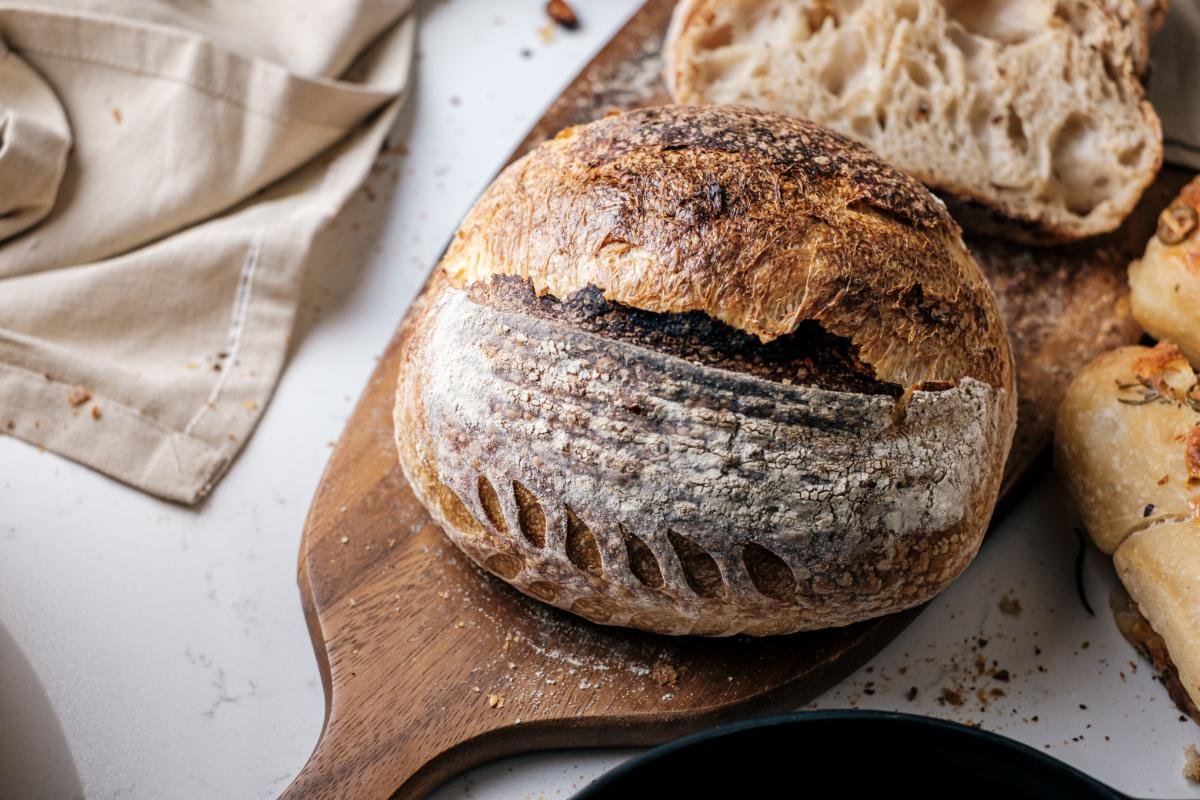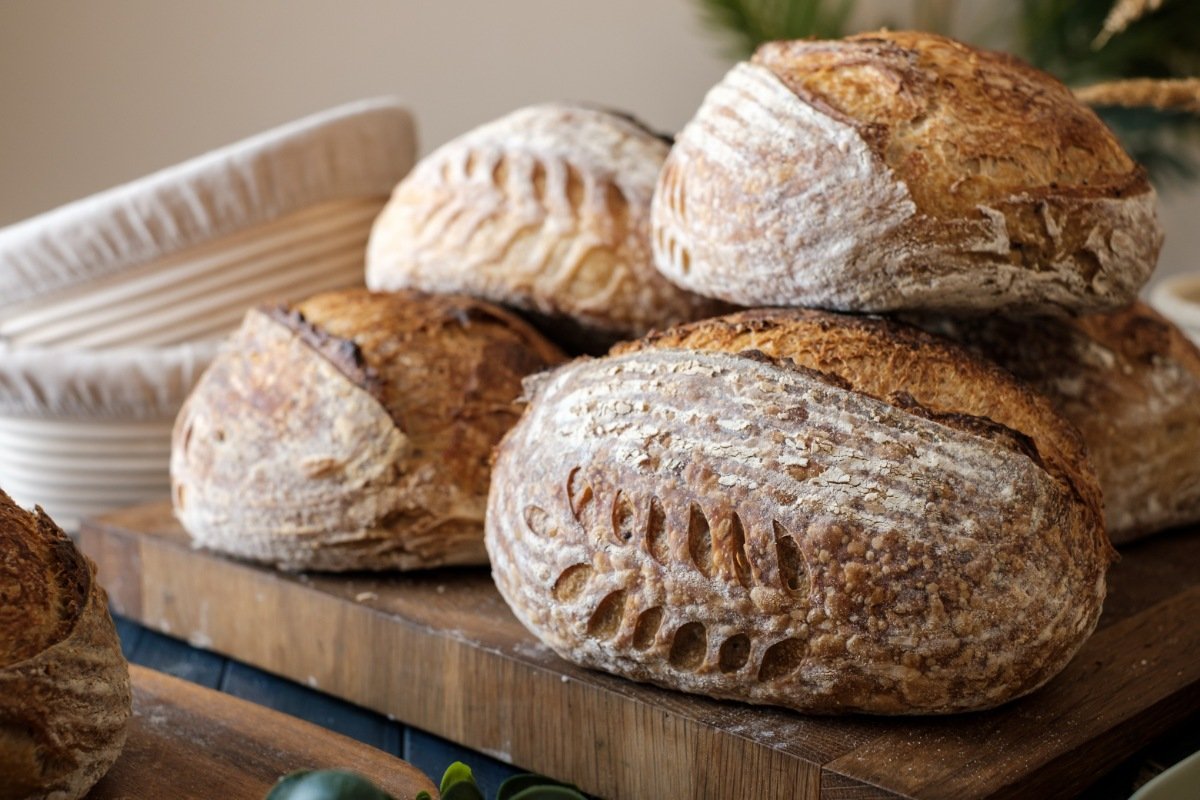Introduction: Discovering the Elegance of Bâtard Bread
Bâtard bread, a cornerstone of French baking tradition, bridges the gap between the slender baguette and the stout boule with grace and flavor. Its name, evoking a sense of playful irreverence, translates to “bastard” in English, hinting at its status as an intermediary form. This loaf, with its robust crust and tender crumb, serves not just as sustenance but as a testament to the art of baking. In this exploration, we delve into the essence of Bâtard bread, uncovering its origins, the finesse required in its creation, and its cherished place at the table. Whether for the professional chef or the home baker, understanding Bâtard bread offers a gateway to mastering French baking’s subtleties and delights.
History and Origin: The Tale of Bâtard Bread

The French Roots
The journey of Bâtard bread begins in the heart of France, a country renowned for its rich baking heritage. Unlike the globally recognized baguette, the Bâtard does not boast a singular, legendary origin story. Instead, it emerged out of practicality and creativity, born from bakers’ desires to utilize dough remnants efficiently. This pragmatism led to the creation of a loaf that was neither too long nor too round, fitting perfectly into the ovens of the time and the lives of its people. The Bâtard’s unique shape and size catered to families seeking a versatile bread, suitable for various meals and occasions.
A Sibling Amongst Icons
To fully appreciate Bâtard bread, one must understand its relation to the baguette and boule. The baguette, with its iconic slender form, offers a crisp crust and airy interior, ideal for sandwiches and as an accompaniment to meals. The boule, or “ball,” presents a more rustic choice, with a hearty crust and dense crumb, perfect for tearing and sharing. The Bâtard, with its intermediate size, combines the best of both worlds: the crust-to-crumb ratio of a baguette with the substance and satisfaction of a boule. This balance has made it a beloved option for those seeking a bread that is both practical and pleasurable to eat.
Evolution Through the Ages
Over the years, the Bâtard has evolved, with bakers experimenting with different flours, hydration levels, and techniques to enhance its flavor and texture. From the traditional white flour recipe, variations now include whole wheat, rye, and multigrain options, reflecting the changing tastes and nutritional preferences of consumers. This evolution underscores the Bâtard’s adaptability and its ability to stand the test of time, adapting to the palates and needs of each generation.
The story of Bâtard bread is a testament to the creativity and resourcefulness of bakers past and present. It exemplifies how necessity, combined with culinary artistry, can give rise to enduring traditions that continue to enchant and satisfy. As we journey through the specifics of its ingredients and baking process, we pay homage to this humble loaf’s rich history and the countless hands that have shaped it through the centuries.
Ingredients and Baking Process: Crafting the Perfect Bâtard
Selecting the Right Ingredients
Creating an exceptional Bâtard bread begins with the selection of high-quality ingredients. The simplicity of the recipe highlights the importance of each component:
- Flour: Opt for high-protein bread flour to ensure the dough has enough strength and elasticity. The protein content contributes to a well-developed gluten network, vital for the bread’s structure.
- Water: The hydration level of the dough significantly affects the bread’s texture. A higher water content results in a more open crumb and a lighter loaf.
- Yeast: Fresh yeast is traditional, but active dry or instant yeast works equally well. Yeast not only leavens the bread but also contributes to its flavor.
- Salt: Besides seasoning, salt controls yeast activity and strengthens the gluten structure, impacting the bread’s overall texture.
The Bâtard Baking Process
Mixing and Kneading
Begin by combining the flour, water, yeast, and salt, mixing until a shaggy dough forms. Kneading, whether by hand or with a mixer, develops the gluten, creating a smooth and elastic dough. The goal is to achieve a dough that is tacky but not sticky, indicating a well-balanced hydration.
First Proof
Place the kneaded dough in a lightly oiled bowl, covering it to prevent drying. Allow it to rise until it doubles in size, a process that typically takes 1 to 2 hours depending on the ambient temperature. This first proof, or bulk fermentation, develops the dough’s flavor and structure.
Shaping the Dough
Once the dough has risen, gently deflate it and shape it into a batard. This involves creating tension on the surface by folding and rolling the dough, ensuring a uniform shape and size. Proper shaping is crucial for the bread’s final appearance and texture.
Second Proof
After shaping, the Bâtard requires a second proof, often in a cloth-lined basket or couche to maintain its shape. This final rise is critical for achieving the desired volume and crumb structure. It also allows the surface to develop a slight skin, contributing to the crust’s texture.
Scoring and Baking
Before baking, score the dough’s surface with a sharp blade. This not only adds an artisanal touch but also controls the bread’s expansion in the oven. Bake in a preheated oven, preferably with steam, to achieve a golden, crispy crust. The steam helps the crust develop while allowing the bread to expand freely.
Cooling
Allow the baked Bâtard to cool on a wire rack. This step is essential for the crust to set and for the crumb to stabilize, ensuring the bread slices cleanly and has the perfect texture.
Perfecting the Art
Baking Bâtard bread is both an art and a science. Attention to detail, from ingredient selection to the baking process, influences the bread’s quality. Experimentation with different flours, hydration levels, and fermenting times can lead to unique variations, encouraging bakers to explore and perfect their craft. The joy of baking Bâtard lies not just in the delicious results but in the process of creation, a testament to the beauty and simplicity of artisanal baking.
Variations and Serving Suggestions: Elevating the Bâtard Experience

Exploring Bâtard Variations
The classic Bâtard, while exquisite in its traditional form, serves as a canvas for culinary creativity. Bakers around the world have introduced a plethora of variations, each adding a unique twist to the original recipe. Here are some notable variations:
- Whole Wheat Bâtard: Incorporating whole wheat flour introduces a nutty flavor and a denser crumb, appealing to those seeking a more rustic and nutritious loaf.
- Multigrain Bâtard: A mix of grains such as oats, barley, and flaxseeds not only adds texture but also enriches the bread with a variety of flavors and health benefits.
- Sourdough Bâtard: Replacing commercial yeast with a sourdough starter imparts a distinctive tang and improves the bread’s shelf life, making it a favorite among artisanal bakers.
- Olive and Herb Bâtard: Adding olives, rosemary, or thyme infuses the bread with Mediterranean flavors, perfect for pairing with cheese or wine.
These variations showcase the versatility of Bâtard bread, allowing bakers to tailor the loaf to their taste preferences and dietary needs.
Serving Suggestions
Bâtard bread’s robust crust and tender crumb make it an ideal companion to a variety of dishes and occasions. Here are some serving suggestions to inspire:
- Breakfast and Brunch: Slice the Bâtard and toast lightly, serving it with butter and jam for a simple yet satisfying breakfast. Alternatively, use it to create a decadent French toast, soaked in a mixture of eggs, milk, and cinnamon.
- Charcuterie Boards: The Bâtard’s size and texture make it perfect for slicing into bite-sized pieces and serving alongside cured meats, cheeses, and fruits on a charcuterie board.
- Soups and Stews: A hearty slice of Bâtard is the perfect vessel for dipping into rich soups and stews, absorbing the flavors while maintaining its texture.
- Sandwiches: The Bâtard’s firm crust and soft interior make it an excellent bread for sandwiches. Its versatile shape accommodates both traditional sliced sandwiches and more creative open-faced versions.
Pairing with Cheeses and Wines
The nuanced flavors of Bâtard bread pair beautifully with a wide range of cheeses and wines, elevating any dining experience. For a harmonious pairing, consider the following:
- Cheese Pairings: Soft cheeses like Brie or Camembert complement the bread’s texture, while aged cheeses such as Gruyère or Cheddar enhance its flavors with their sharpness.
- Wine Pairings: A crisp white wine, like Sauvignon Blanc, pairs well with lighter Bâtard variations, whereas a robust red wine, such as Merlot or Cabernet Sauvignon, suits heartier versions.
Experimenting with different combinations can lead to delightful discoveries, making each Bâtard experience unique and memorable.
Conclusion: A Bread for All Seasons
Bâtard bread, with its endless variations and serving possibilities, stands as a testament to the adaptability and creativity of bakers worldwide. Whether enjoyed in its simplest form or as part of a gourmet meal, the Bâtard continues to captivate and satisfy palates across the globe. As we continue to explore and innovate, the tradition of Bâtard bread will undoubtedly flourish, reminding us of the simple pleasures that well-crafted bread can bring to our lives.
Bâtard Bread in Professional Baking: Mastery Beyond the Home Oven
Embracing Tradition in Culinary Schools
Culinary schools around the globe pay homage to the art of French baking by incorporating Bâtard bread into their curriculum. Students learn not just the technical skills needed to craft the perfect loaf but also the historical and cultural significance of bread in French cuisine. Instructors emphasize the importance of mastering such foundational recipes, as they form the basis for exploring more complex baking techniques and innovations. Through hands-on lessons, aspiring chefs and bakers gain a deep appreciation for the precision and patience required in artisanal bread making, setting the stage for a lifelong journey in the culinary arts.
The Professional Baker’s Perspective
For professional bakers, the Bâtard is a symbol of expertise and craftsmanship. Bakeries pride themselves on their ability to produce consistently high-quality loaves, each bearing the unique signature of the baker’s hand. Beyond the basic recipe, professionals experiment with fermentation times, hydration levels, and ingredient combinations to create signature Bâtard breads that distinguish their offerings in a competitive market. Interviews with seasoned bakers reveal a unanimous respect for the tradition of Bâtard baking, along with an enthusiasm for innovation that keeps the craft alive and evolving.
Challenges and Rewards
Baking Bâtard bread at a professional level presents its own set of challenges, from maintaining consistency across batches to managing the logistical demands of production. Yet, the rewards are manifold. Bakers speak of the satisfaction derived from the tactile process of shaping dough and the joy of witnessing the transformation in the oven. Moreover, the positive feedback from customers, who often seek out artisanal bread for its superior taste and texture, affirms the value of their meticulous work. The Bâtard, with its humble origins and sophisticated appeal, continues to be a source of pride for bakeries committed to the artisanal tradition.
The Role of Bâtard in Gastronomy
The versatility of Bâtard bread extends beyond the bakery, influencing menus in restaurants and cafes. Chefs appreciate the Bâtard for its ability to complement a wide range of dishes, from simple spreads to elaborate entrees. Its robust structure makes it an ideal choice for bruschetta, crostini, and other appetizers that require a sturdy base. Moreover, the Bâtard’s aesthetic appeal enhances the presentation of dishes, adding an element of rustic elegance to the dining experience. As a result, this bread not only satisfies the palate but also contributes to the overall gastronomic narrative, elevating meals from ordinary to extraordinary.
Home Baking Tips: Mastering Bâtard Bread in Your Kitchen
Embracing the Basics with Confidence
The journey to baking the perfect Bâtard at home begins with understanding and mastering the basics. Start with high-quality ingredients, as they are the foundation of a flavorful loaf. Use bread flour for its higher protein content, which aids in gluten development, and ensure your yeast is fresh for optimal leavening. Measuring ingredients by weight rather than volume can significantly increase your precision and the consistency of your results.
Creating the Perfect Environment
Yeast thrives in a warm, moist environment, so creating the right conditions for your dough to rise is crucial. Find a spot in your kitchen that maintains a consistent temperature, avoiding drafts or sudden temperature changes. If your kitchen is cool, you can create a makeshift proofing box in your oven with a bowl of warm water to increase humidity.
Kneading and Shaping Like a Pro
Kneading develops the gluten in your dough, which gives bread its structure and chew. Focus on achieving a smooth, elastic dough that springs back when poked. When it comes to shaping, practice makes perfect. Shaping your Bâtard with even pressure results in a loaf that rises uniformly. Don’t be discouraged by initial imperfections; even seasoned bakers took time to perfect their technique.
The Importance of Scoring
Scoring the dough just before baking is not merely decorative; it allows the bread to expand in a controlled manner, preventing cracks. Use a sharp blade and make swift, confident slashes. This will also contribute to the artisanal look of your Bâtard, making it not only delicious but visually appealing.
Baking Stones and Steam for the Ultimate Crust
A baking stone can mimic the conditions of a professional oven, distributing heat evenly and contributing to a well-baked crust. Introducing steam during the first few minutes of baking helps the crust develop properly, allowing the bread to expand fully before the crust hardens. You can achieve this by placing a pan of hot water in the oven or spritzing the oven with water.
Common Pitfalls and How to Avoid Them
Overproofing and Underproofing
One of the most common issues in bread baking is not recognizing when the dough has proofed sufficiently. Overproofed dough will collapse, while underproofed dough won’t rise enough. Pay attention to the dough’s volume and texture rather than just the time it has been proofing.
Inconsistent Oven Temperature
Home ovens can be notoriously inconsistent. Use an oven thermometer to ensure the accuracy of your oven’s temperature setting. Preheating your oven longer than you think is necessary can also help achieve a more consistent baking environment.
Encouragement for the Novice Baker
Baking Bâtard bread at home can be incredibly rewarding, offering not just delicious results but also the satisfaction of mastering a new skill. Every loaf is an opportunity to learn and improve. Embrace the process, celebrate your successes, and learn from your mistakes. Remember, the journey of baking is as fulfilling as the taste of freshly baked bread straight from your oven.



